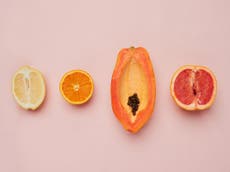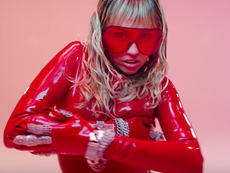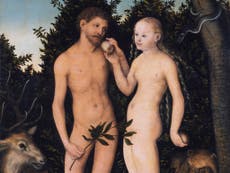Is there room for the Virgin Mary in a 21st century Christmas?
There’s something very troubling about a culture that affirms, celebrates and perpetuates the idea that virginity is a girl’s most valuable attribute and a measure of her moral character


Your support helps us to tell the story
From reproductive rights to climate change to Big Tech, The Independent is on the ground when the story is developing. Whether it's investigating the financials of Elon Musk's pro-Trump PAC or producing our latest documentary, 'The A Word', which shines a light on the American women fighting for reproductive rights, we know how important it is to parse out the facts from the messaging.
At such a critical moment in US history, we need reporters on the ground. Your donation allows us to keep sending journalists to speak to both sides of the story.
The Independent is trusted by Americans across the entire political spectrum. And unlike many other quality news outlets, we choose not to lock Americans out of our reporting and analysis with paywalls. We believe quality journalism should be available to everyone, paid for by those who can afford it.
Your support makes all the difference.It’s beginning to look a lot like Christmas: twinkling fairy lights, chestnuts roasting by an open fire, jack frost nipping at your nose, and the veneration of a virgin mother. Ah yes, nothing quite says “festive spirit” like giant tins of Quality Street and impossible feminine ideals.
The image of the Virgin Mary, so ubiquitous at this time of year, represents female sexual “purity” as the ultimate measure of a woman’s status and worth.
The Virgin Mary as the supreme exemplar of femininity, simultaneously elevating both virginity and motherhood, is so deeply embedded in western culture that we’ve become the fish who don’t realise we’re living in a bowl.
At a time of year when traditionally hundreds of primary schools rehearse their annual nativity plays with little girls cast as pregnant virgins, and thousands of us send out seasonal cards featuring images of the Virgin Mary and baby Jesus, France continues to debate its proposed ban on virginity testing, targeting minority Muslim and some Roma communities. Virginity isn’t just valued in western culture, it’s fetishised – and it’s wielded as a powerful but intensely damaging cultural weapon to control and police women’s bodies.
The practice of virginity testing is a relatively rare but utterly horrifying invasion of a girl or woman’s body. It’s an assertion of ownership and a form of control over female bodies and sexuality. There’s no doubt that the pseudo-medical practice of checking for a hymen – the small piece of skin that partially covers the vagina – is appalling, but then so is the cultural construct of virginity. Virginity testing is the logical progression of an already dubious and damaging concept.
There’s something very troubling about a culture that affirms, celebrates and perpetuates the idea that virginity is a girl’s most valuable attribute and a measure of her moral character.
The Virgin Mary embodies the qualities of the ideal woman, one worthy of ultimate respect. We’ve seen so many times in rape trials and judgements about women that the two separate issues of sexual experience and perceived virtue are presented as inextricably linked. A virgin defiled is a moral travesty but an abused sex worker was asking for it. Virgin Mary imagery reifies and celebrates this dubious connection between sexual status – something that’s private and no one else’s business – with being a person worthy of compassion and respect. Virginity takes on more than just the description of a person who’s yet to have sex and becomes an indicator of a woman’s moral integrity.
You might be thinking, what’s the big deal? Well, the big deal is that the Virgin Mary is one of, if not the most, influential female cultural icons. What the Virgin Mary represents culturally matters for how we think about women and how we behave towards them. Religious iconography tells us what ideal femininity should look like and becomes a cultural reference point for what all women should strive to be.
Virginity, then, is a cultural construct rather than a bodily attribute. Yet it isn’t considered an outdated notion, but rather like a physical property that can be tested for, lost, protected, stolen, given, bought, gifted, taken – and, if you’ve a few grand to spare, repaired.
The cultural obsession with female virginity is more about a desire to take ownership of girls’ and women’s bodies to control their sexual behaviour.
Perhaps it’s time to throw out the concept of virginity, along with the Christmas cards.
Dr Katie Edwards is a freelance writer and broadcaster



Join our commenting forum
Join thought-provoking conversations, follow other Independent readers and see their replies
Comments